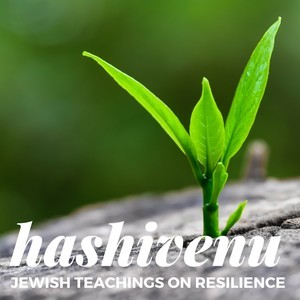Midrash
Episode 14 · May 14th, 2018 · 22 mins 18 secs
About this Episode
The holiday of Shavuot is approaching. This year (2018) on the secular calendar it begins on Saturday evening, May 19. On Shavuot, we celebrate receiving the Torah, the foundational text of the Jewish people. "Torah" has multiple meanings in Jewish tradition. Most folks know it as the Five Books of Moses. But “Torah” in a broader sense is much more. It’s the collection of each and every generation’s engagement with sacred text and with our efforts to live lives of holiness and connection — to each other and to the divine.
In that expansive spirit, we are bringing you a two-part podcast series leading up to Shavuot. In this episode, Rabbi Mira Wasserman and I discuss Midrash, the way ancient rabbis read scripture in new and creative ways, giving old words new life, meaning and relevance.
This podcast is produced by Reconstructing Judaism. Visit us at ReconstructingJudaism.org.
Support HashivenuEpisode Links
- Ritualwell: 5 Creative Resources for Torah Study
- About our name and theme song: Hashivenu
- Lamentations 5:21 — הֲשִׁיבֵ֨נוּ הי אֵלֶ֙יךָ֙ ונשוב [וְֽנָשׁ֔וּבָה] חַדֵּ֥שׁ יָמֵ֖ינוּ כְּקֶֽדֶם׃
- Midrash Eichah Rabbah
- Jews, Gentiles, and Other Animals: the Talmud after the humanities — In Jews, Gentiles, and Other Animals, Mira Beth Wasserman undertakes a close reading of Avoda Zara, arguably the Talmud's most scandalous tractate, to uncover the hidden architecture of this classic work of Jewish religious thought. She proposes a new way of reading the Talmud that brings it into conversation with the humanities, including animal studies, the new materialisms, and other areas of critical theory that have been reshaping the understanding of what it is to be a human being.
- New Books Network podcast: Mira Beth Wasserman, “Jews, Gentiles, and Other Animals: The Talmud After the Humanities”
